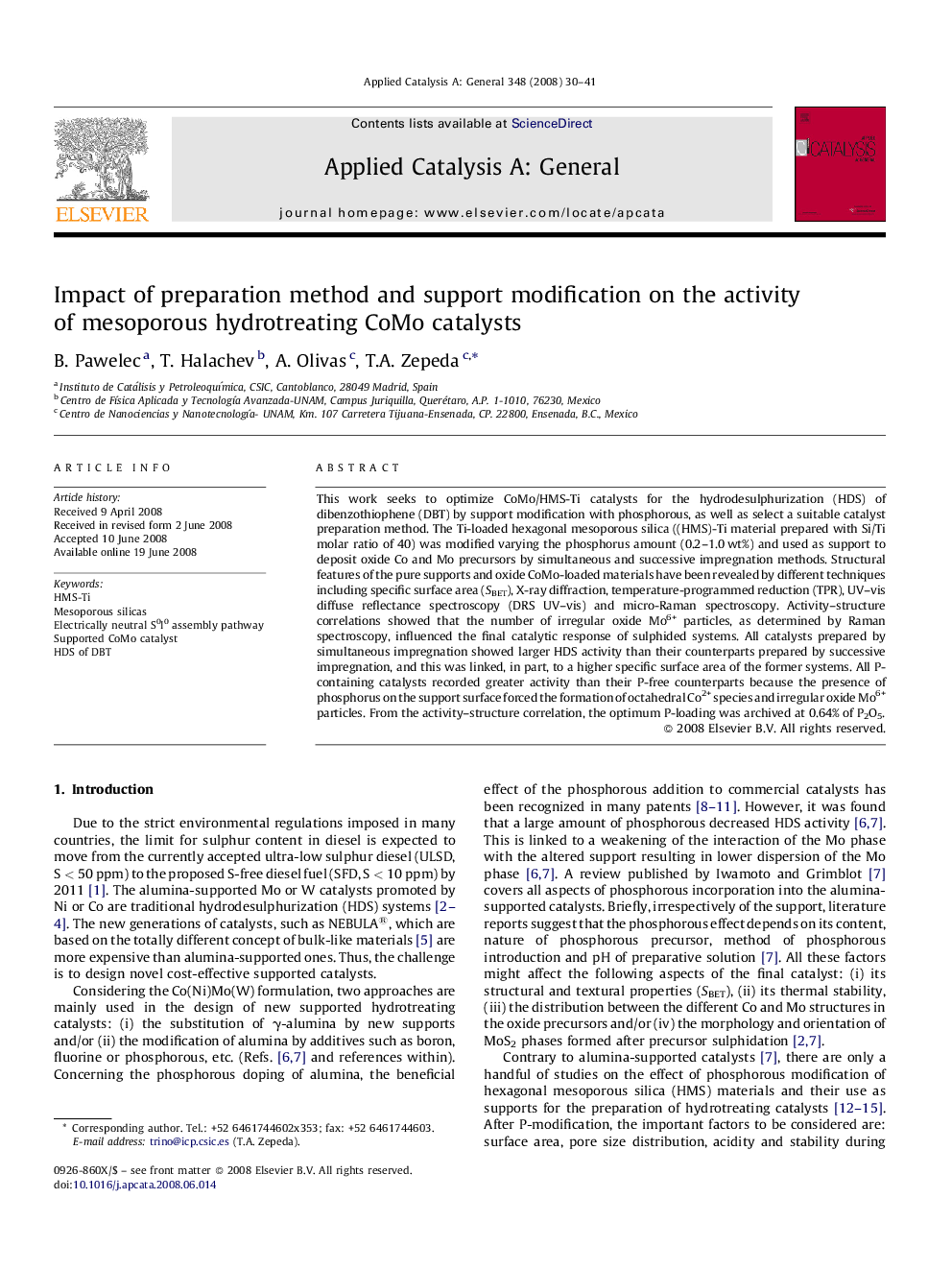| Article ID | Journal | Published Year | Pages | File Type |
|---|---|---|---|---|
| 43562 | Applied Catalysis A: General | 2008 | 12 Pages |
This work seeks to optimize CoMo/HMS-Ti catalysts for the hydrodesulphurization (HDS) of dibenzothiophene (DBT) by support modification with phosphorous, as well as select a suitable catalyst preparation method. The Ti-loaded hexagonal mesoporous silica ((HMS)-Ti material prepared with Si/Ti molar ratio of 40) was modified varying the phosphorus amount (0.2–1.0 wt%) and used as support to deposit oxide Co and Mo precursors by simultaneous and successive impregnation methods. Structural features of the pure supports and oxide CoMo-loaded materials have been revealed by different techniques including specific surface area (SBET), X-ray diffraction, temperature-programmed reduction (TPR), UV–vis diffuse reflectance spectroscopy (DRS UV–vis) and micro-Raman spectroscopy. Activity–structure correlations showed that the number of irregular oxide Mo6+ particles, as determined by Raman spectroscopy, influenced the final catalytic response of sulphided systems. All catalysts prepared by simultaneous impregnation showed larger HDS activity than their counterparts prepared by successive impregnation, and this was linked, in part, to a higher specific surface area of the former systems. All P-containing catalysts recorded greater activity than their P-free counterparts because the presence of phosphorus on the support surface forced the formation of octahedral Co2+ species and irregular oxide Mo6+ particles. From the activity–structure correlation, the optimum P-loading was archived at 0.64% of P2O5.
Graphical abstractThis work seeks to optimize CoMo/HMS-Ti catalysts for the hydrodesulphurization (HDS) of dibenzothiophene (DBT) by support modification with phosphorous, as well as select a suitable catalyst preparation method (successive and simultaneous methods). We found that the number of irregular oxide Mo6+ particles, as determined by Raman spectroscopy, influenced in the final catalytic response of sulphided systems. All catalysts prepared by simultaneous impregnation showed larger HDS activity than their counterparts prepared by successive impregnation, because the presence of phosphorus on the support surface forced the formation of octahedral Co2+ species and irregular oxide Mo6+ particles.Figure optionsDownload full-size imageDownload as PowerPoint slide
